Maryland
Loch Raven
Loch Raven

Vibrant,
June, 2013

Silhouette Upon a Colorful Winter Sky,
February, 2016

Tonal Reflections,
October, 2016

Landing on the Icy Surface,
February, 2015

A Winter Sunset,
January, 2015

A Morning Flight,
July, 2017

Sunset by the Lake,
March, 2019
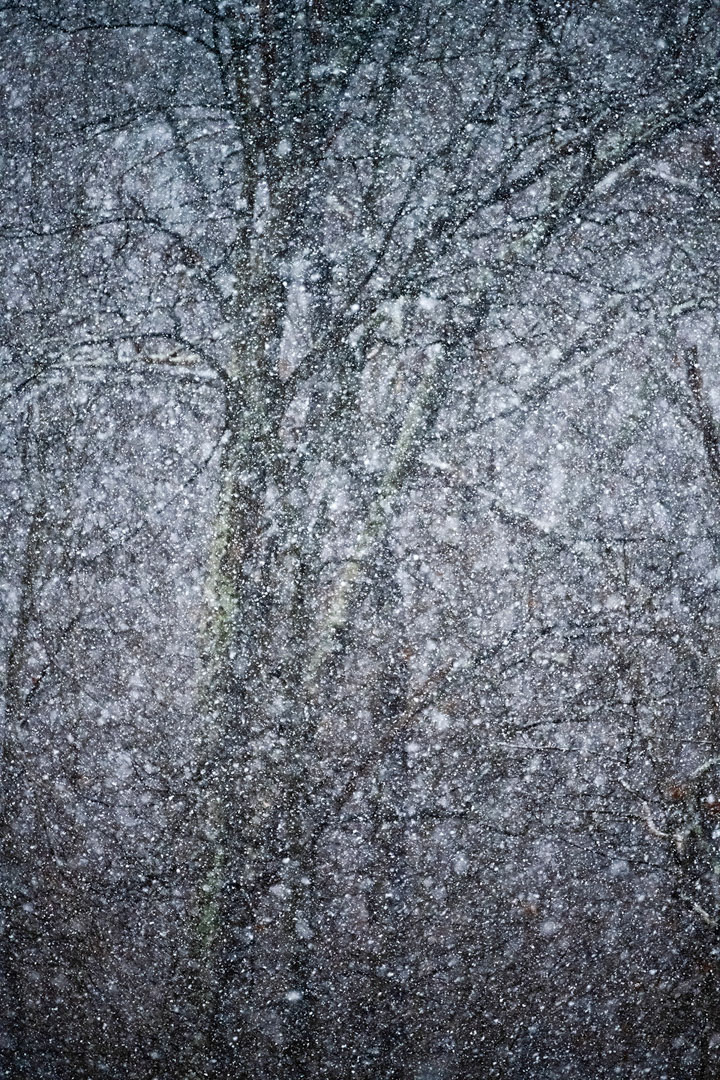
A Tree in the Heavy Snow,
January, 2025

Sun and Mist Rising Above Loch Raven,
July, 2017




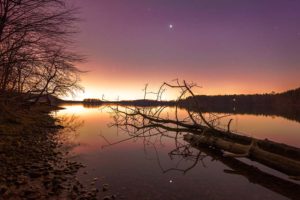

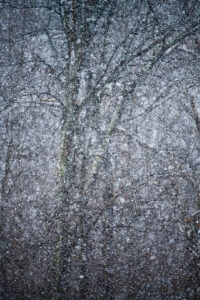


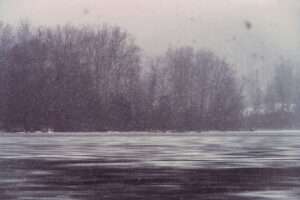
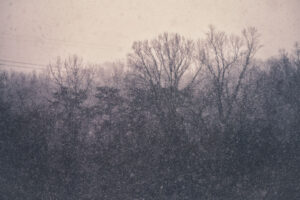


















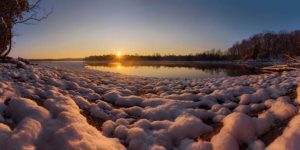

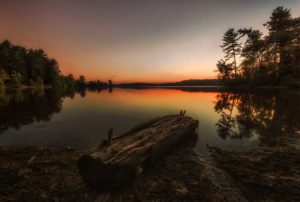



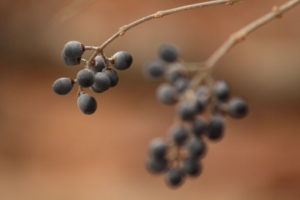







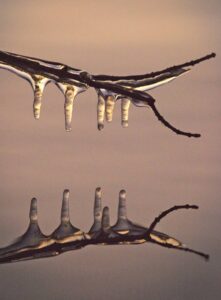




Location Notes
A reservoir for servicing residents of Baltimore and the surrounding areas, Loch Raven is a haven for water fowl and water dwelling animals. It also offers hiking and mountain biking trails throughout the surrounding woodland. There is no main location, and there are many trails, but my favorite spot is along Loch Raven Drive. Part of the road is typically closed 10-5pm during the weekends for recreational use. There is a useful website, lochraventrails.com, for finding the main hiking and biking trails, as well as providing additional information about the plants and animals in the area. I have hiked and/or biked almost all of these trails, and many of them countless times. Although truly wonderful anytime of year, Fall here is an almost magical season. The trees turn into various shades of orange, red, green, and yellow, and their leaves coat the trails like a multi-colored carpet.

No matter the time of year, there are very few people off the main trails, and one often can feel completely alone. One of the nicest memories of Fall I have from this area is when I left the confines of the trails and headed over a hill down to the waters edge. I found a rock along the shoreline on which to sit and observe the sunset. The orange light from the setting sun only accentuated the colors of the leaves; the only noticeable sounds were from a slight wind blowing in the trees, and the waves lapping on the lake’s edge. This moment of tranquility and natural beauty exhibits the characteristics of Loch Raven that make it a truly special place, and one that rivals any other location I have ever visited.

Aside from the common sightings of deer, beavers, woodpeckers, turtles, and other animals that inhabit the local region, I have also seen more rare animals, such as a mink who was swimming in the lake prior to walking on the shore a mere ~10 feet from where I was standing. In the last several years, I have seen many bald eagles as well. The more mature bald eagles have white heads, whereas the juveniles are all brown with yellow splotches. On one occasion both eagles and diving ducks were catching fish on the lake and it made for quite an interesting spectacle. These ducks, called common mergansers, migrate from the north during the winter looking for bodies of water that are not yet frozen over. Unlike the resident mallards, these ducks are fishers, and can often be seen diving into the depths of the water in search for prey. On this occasion, a vast number of mergansers gathered on the lake and a feeding frenzy broke out. It was easy to tell when a fish had been caught; there would be loud splashing in the water as a group of ducks would try to catch the one who had the fish in it’s mouth. The pursued duck would then swallow the fish before it could get stolen. This happened over and over at a surprisingly high rate as they caught more and more fish. Unlike ducks, eagles hunt from the air, swooping down and grabbing the fish with their talons. They have to carry the fish in mid-air, which gives their fellow hunters a chance to take it away.

Birds present all year round on the lake include mallards, Canada geese, and sea gulls. Springtime is a season when the geese have their young, and it is a common site to see a dozen or more chicks within one grouping of adults.
Gunpowder Falls State Park
Gunpowder Falls State Park

A Figure in the Fog,
December, 2022

Autumn Color Along the River,
October, 2019

Autumn Bridge,
November, 2017

River Contemplations,
May, 2020

River Mist,
May, 2020
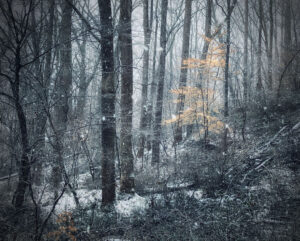
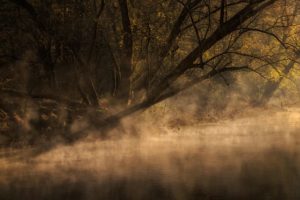


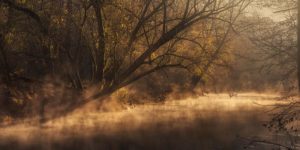






Location Notes
Gunpowder Falls State Park has six separate locations throughout the state of Maryland which surround sections of the Gunpowder, Little Gunpowder Falls, and Big Gunpowder Falls rivers. The Gunpowder river is about 7 miles in length and more than a mile wide. It flows into the Chesapeake Bay and is fed by the Little Gunpowder and Big Gunpowder Falls rivers. Big Gunpowder Falls meanders roughly 57 miles from southern Pennsylvania into Prettyboy and Loch Raven Reservoirs in Baltimore County and finally terminates at the Gunpowder river. Little Gunpowder Falls flows about 25 miles through Harford County and the border of Harford and Baltimore Counties. The park provides a multitude of hiking and biking trails that give scenic views of the rivers and the surrounding woodland.
Of historical note, Captain John Smith sailed up the Gunpowder river during an exploration of the Chesapeake Bay in 1608. The river is thought to be named because of the discovery in the mid seventeenth century of a key ingredient to black powder along the banks of the river, potassium nitrate. The clear waters of the rivers also made them attractive for paper making, and the first paper mill along the river was built around the time of the American Revolution. Later, the mill would supply the majority of paper used as currency in the new government. Many other mills, mines, and factories were later built along the river. Today, one can visit an historic mill at Jerusalem Village in Harford County which was built at the end of the eighteenth century for the purpose of grinding grain.
One section of the park follows the NCR, or Torrey C. Brown, trail in Baltimore County which is a flat trail that loosely follows alongside rivers while passes through scenic woodland and rural areas. The trail was formerly the Northern Central Railway which took passengers and cargo to and from Maryland, Pennsylvania, Ohio, and New York. It also ferried president Abraham Lincoln to Gettysburg for the dedication of the national cemetery, and later it carried the President’s body as part of his funeral procession.
The Hereford area of the park resides along Big Gunpowder Falls river to the east of Prettyboy Reservoir. The Sweet Air section lies between Baltimore and Harford Counties along Little Gunpowder River. The central area is located to the south-east and stretches along a large portion of the same river. There is another section of the central area to the south which encompasses part of the Big Gunpowder river. To the south, along the shores of the Chesapeake, is the Hammerman area of the park where there are boat rentals, a sandy shoreline, and some short walking trails. Slightly farther south is the Dundee Creek Marina which also offers boat rentals on the Bay.
Other Maryland Parks
Other Maryland Parks

An Evening View of the Chesapeake,
December, 2016

Pier at North Point,
December, 2016








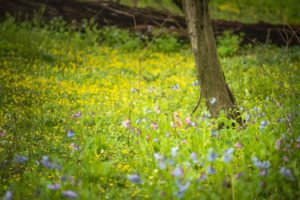





Location Notes
Maryland contains dozens of state parks which host natural and historical attractions, as well as providing recreational opportunities for hiking, biking, kayaking, and more. Included are images from Susquehanna and North Point State Parks, as well as Great Falls Park which is actually federally owned and resides along the Potomac river that borders Virginia and Maryland.
Country, Farmland, and Suburbs
Country, Farmland, and Suburbs
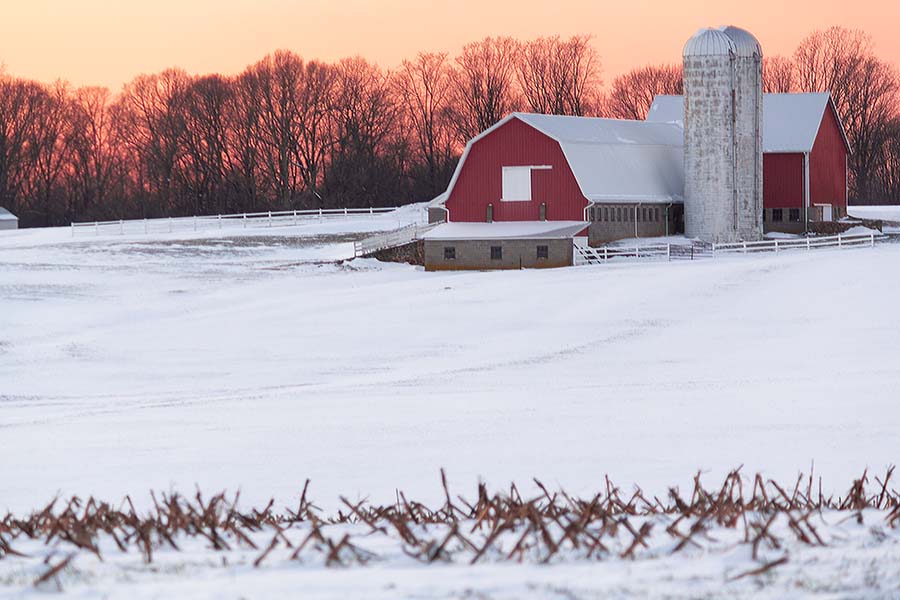
Snow Blanketed Farmland,
January, 2014

Peaceful Tones,
October, 2012

Winter Bluebird,
January, 2021
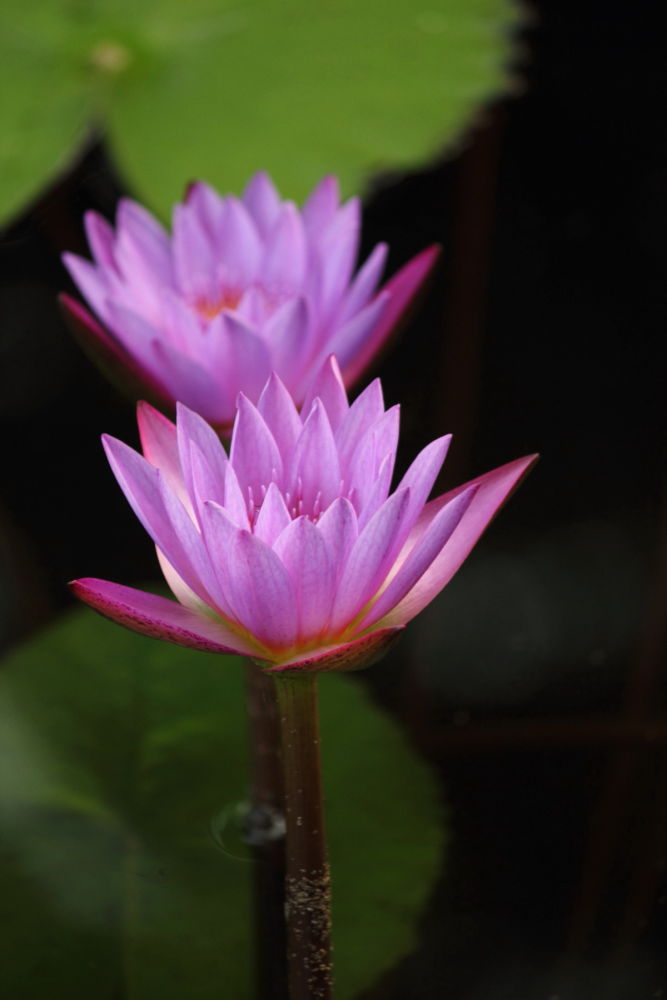
Water Lilies at Ladew Gardens,
July, 2012
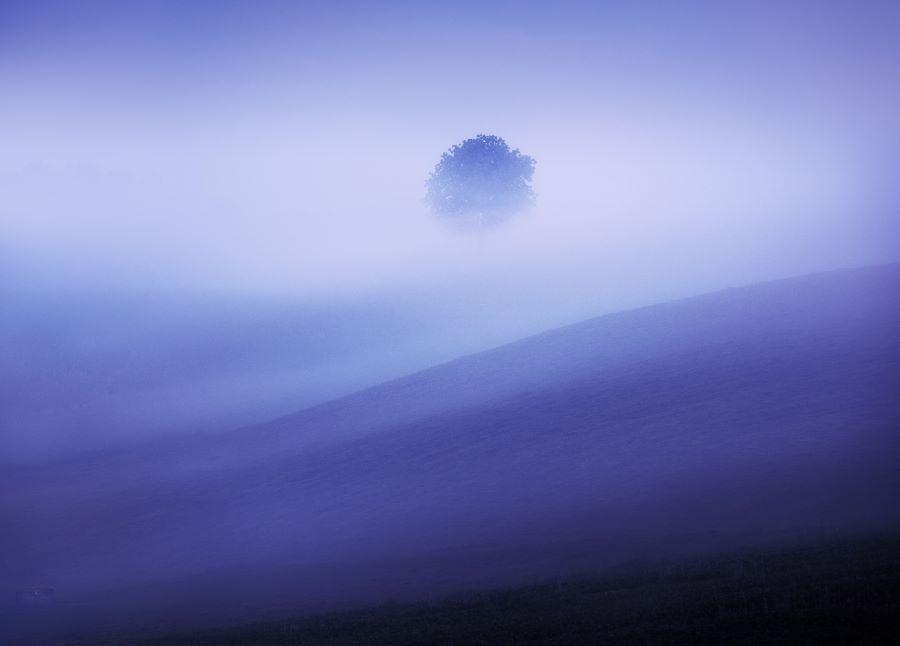
Heaven on Earth,
June, 2020

Miller’s Farm,
August, 2017

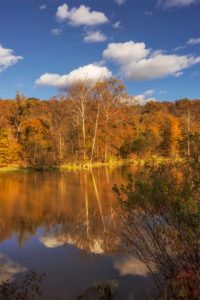



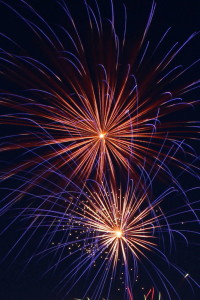










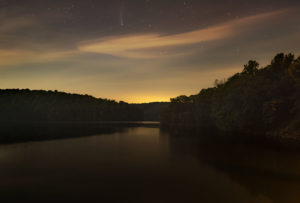
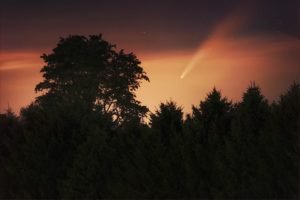

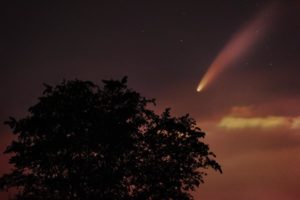













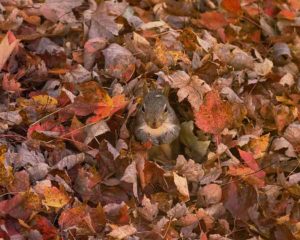




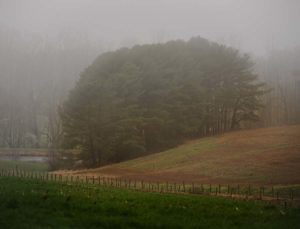

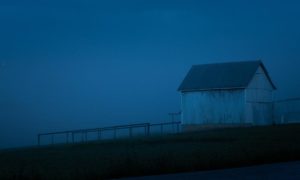



Location Notes
In addition to the parks and other designated natural areas where one can find beautiful scenery, Maryland is home to picturesque farmlands, woodland, beaches, mountains, and countryside. Whether the scenery features rustic barns, horses (wild and tame), wildlife, icy waterfalls, woodland adorned in autumn color, sunflower fields in bloom, a sailboat on the bay, a quiet stream flowing around moss covered rocks, or other sights that inspires the imagination, one can come across a large diversity of wonderful scenes throughout the state. It should not be understated that sometimes one’s own backyard, window, or local stomping ground can also be a place of inspirational potential.
I grew up in northern Baltimore County on a wooded 5-acre lot that bordered a golf course, a field where horses grazed, a small meadow which contained an antique red barn, and more woodland. Immersed in such a rural environment provided me with an opportunity to enjoy nature and have memorable experiences in the outdoors, for which I am very grateful. An example of two of these experiences came when I went out for a walk in the snow, which I will now share. On one such instance, I started out into the woods while the setting sun shone through the leafless trees, casting an orange light that reflected off the snowflakes on the snow surface like diamond glitter. The color of the sunlight was magnificently emphasized on the monotone, clean, white surface. Shadows of the tree trunks and branches lay on the ground, creating a captivating blue/orange color-contrast. The thin, crusty, snow layer displaced underfoot made for one of the only sounds present on this still evening. However, as I walked, a sound rained down on the landscape from above: a flock of migrating geese flying overhead in a V formation. I stopped and looked up to take-in the welcome sight and sound. I kept walking, heading down to the stream that flowed through the property when I noticed a crescent moon in the deep-blue sky between the trees above. The beautiful sunlight and snow on the landscape, the birds overhead, and the moon beyond, made for a sublime scene and a memorable experience. It is during special experiences such as this when one senses something greater than the sum of the individual components; when qualities such as beauty, peacefulness, grandness, and awe enter one’s consciousness, which themselves, if pondered, beget a sense of wonder and mystery in their own right.
On another occasion, a heavy snowfall pilled approximately three feet of snow on the landscape. Late one night, sometime around 3 am, I was still awake in bed looking out my window at the moonlight illuminating the wooded, snow blanketed, landscape. The moonlight shining on the reflective snow surface turned night into something nearly day-like in appearance. I thought about what a rare opportunity was available: to head into this unusual landscape that I was gazing upon from my window. I put on snow-pants and other winter attire and headed into the magical scene. Walking in powdery snow that occasionally comes up to your hips is a special experience any time of day, let alone in the middle of the night when the surrealness of the scene is further amplified. There is a sense of carefree enjoyment that comes from walking in such an environment, and I am very thankful to have been able to take advantage of this opportunity to create this memory of a very unusual walk in my backyard.
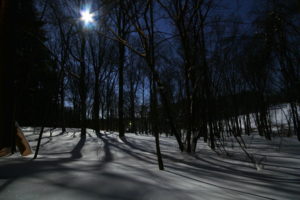
Baltimore
Baltimore

Penn Station,
October, 2014
















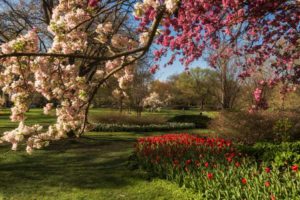






Location Notes
Among one of the attractions in Baltimore City is the Inner Harbor, which features the popular National Aquarium, many restaurants and shops, historic landmarks, and quite a bit of national history. A walk along the harbor will takes one past four picturesque vessels, the USS Constellation, the USS Torsk, USCGC Taney, and the Lightship Chesapeake, all of which can invariably be seen on the waterside. Although associated with much history, perhaps the most well known historic fact regarding Baltimore is that of the writing of the poem that would later become our national anthem. During the war of 1812, the British burned Washington D.C. and then sailed towards Baltimore, which withstood the onslaught. This inspired Francis Scott Key, who witnessed the battle from a ship in the harbor, to write the famous poem.
PrettyBoy Reservoir
PrettyBoy Reservoir

Shrouded in Cloud,
December, 2022



Location Notes
Prettyboy reservoir is located in northern Baltimore County and is fed by the Big Gunpowder Falls river. It is smaller than Loch Raven Reservoir to its south and also less visited. It offers many exceptional hiking opportunities in the woodland surrounding the lake and, like Loch Raven, one can see waterfowl all year round as well as the occasional Bald Eagle, turtles, fish, beavers, or other wildlife.
Delaware
Delaware
Delaware

Woodland Snowstorm,
January, 2021

Enveloped in White,
February, 2021

Nighttime Fog on the Tracks,
February, 2025
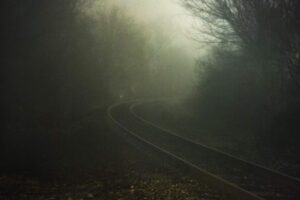



Location Notes
Apart from the eastern shore, I have visited natural areas inland as well, particularly White Clay Creek State Park near the Maryland/Delaware/Pennsylvania border. In many ways this state park reminds me of Gunpowder Falls State Park, with a commonality of a river surrounded by woodland. White Clay Creek has a somewhat less rural feel due to its proximity to urban areas, however offers a great location to experience nature for those living in the nearby cities. One of the experiences at White Clay Creek State Park that stands out in my mind was a walk I had on a winter morning. I set out into the woodland a day after a snowfall of a few inches. There is something special about making the first footprints in newly fallen snow, and I was spellbound by the winter-wonderland scenes around me. I walked around feeling a great appreciation for having such an experience, which is not very common due to the few snowy days and the sub-optimal road conditions that exist when winter precipitation does occur. Indeed, even by the end of the walk the increased number of footprints and harsher sunlight dissipated the sense of magic, to await another winter day sometime in the future. We were fortunate to get several snowfalls during this particular winter season, and on another occasion I was taking a walk in the park when an intensely heavy snowfall began. I had my camera with me and began to capture images of the bright snowflakes falling in front of the darker foreground subjects. The wet, large, snowflakes made for an impressive display. Soon, the heavy snowfall was over. I continued to walk in the woods as the less-intense snow intermittently fell, savoring another walk in these particularly beautiful winter conditions.
Eastern Shore
Rehoboth
Rehoboth

East-End Lighthouse,
August, 2012

Sand Dune,
August, 2012
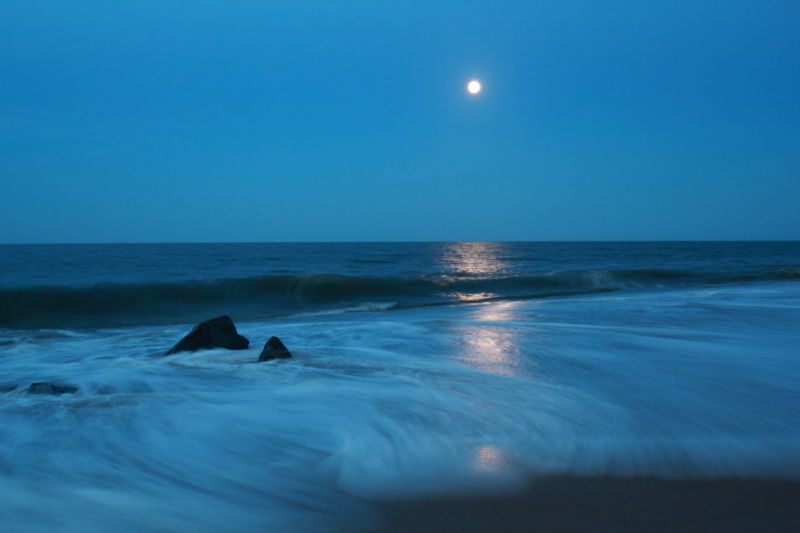
Full Moon Reflecting in the Ocean,
June, 2013

Cape Henlopen,
August, 2012

A Dramatic Sky Above the Still Waters of the Marshland,
June, 2020

Sunrise at Gordon’s Pond,
June, 2020

An Inspiring Pre-Dawn Scene,
June, 2020

Fog on the Marshland,
January, 2022
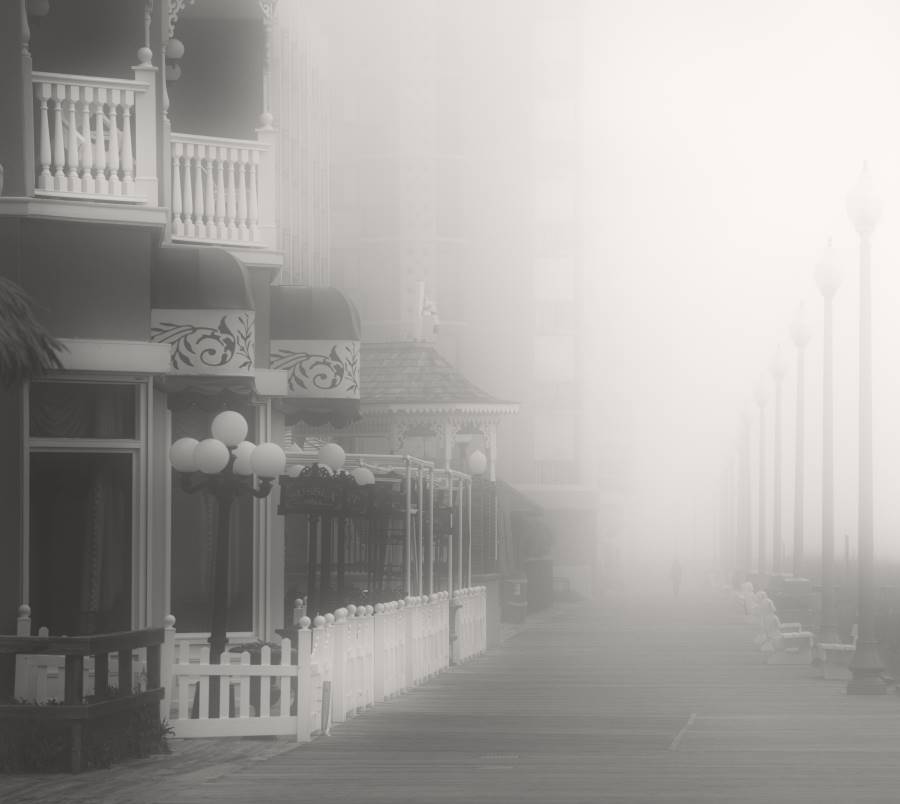
A Solitary Walker,
May, 2022

Lighthouse Beneath the Comet,
July, 2020











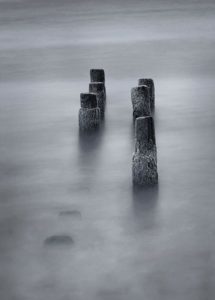























Location Notes
Located on the Delaware Eastern Shore, Rehoboth Beach has been a frequent vacation spot for me and my family for as long as I can remember. Rehoboth features a small but quaint boardwalk with typical touristy shops and candy stores offering lots of opportunity to buy saltwater taffy, fudge of various flavors, ice cream, or whatever other sweets you wish to savor or save for a later occasion. There is also a large beach with lots of room to play games (if the sand’s temperature allows) or sit under the sun, which makes for an enjoyable summer vacation spot. What makes Rehoboth a good place to visit anytime of the year, however, is the walking and biking opportunities in the Rehoboth and Lewes area. My favorite location is Cape Henlopen State Park which contains many paved trails that travel through picturesque sandy areas, marshes, and regions displaying old WWII relics. There are also dirt trails, covered mostly by pine needles, that take one through wooded areas in the park. Although a reasonable 20 minute drive or so from the main area in Rehoboth, the park has recently been made much more accessible via a raised boardwalk connecting a path originating from Whiskey Beach to a trail inside the park itself. For instance, it is now possible to bike from the boardwalk in Rehoboth all the way to the bathhouse inside Cape Henlopen, which would take only about 40 minutes. The East End Lighthouse is often the foreground for many stunning sunsets, but its classic design and distinctive red color make it a superior photo opportunity any time of day.
Below, I recount an excursion in June of 2020 in which I set out to see the spectacular area of Gordon’s Pond in a way I had never before: at sunrise.
By 5 am, a half an hour before sunrise, I was biking towards Gordon’s Pond, a beautiful marshland between Cape Henlopen State Park and Rehoboth Beach, with my camera pack loaded and bug spray applied. It was fairly dark outside, but light enough that I didn’t quite require the use of my bike light. The clouds in the sky above were catching the colorful light of the soon-to-be rising sun, while the horizon was clear (usually a promising indication of a particularly good display at sunrise). With just 4 hours of sleep to go on, it felt that most of the energy that drove the bike forward was due to adrenaline. I kept a decent pace to the Whiskey Beach parking area at the start of Gordon’s Pond trail. I almost stopped to take an image of the silhouetted fence, dunes, and grasses that were beautifully set in front of an orange sky, but I had another location in mind that I wanted to get to before sunrise, which was coming up in only 15 minutes or so. The air was cool, but pleasant, and surprisingly the mosquitos were not out in their usual density. As I biked down Gordon’s Pond trail, the clouds on the horizon started to appear quite red and those higher up were catching color also, so I knew I needed to discard my original plan and find a wide composition that would showcase the scene in the sky. I stopped quickly at an observation deck which I ascended to get a view overlooking the pond.

It was a picturesque view out over the dark blue water. I took a few images of the pond and the two iconic observation towers, remnants of the WWII era, that were silhouetted against the orange sky in the background. Then I continued biking down the path. Along the way I saw a bird feeding in the dark red water which was reflecting the color of the sky. To the west was a full moon which was occasionally revealed in between passing clouds. Finally, I stopped at a location where there was somewhat of a clearing between the tall grasses, giving a view of the water reflecting the colors of the clouds. The peaceful scene also included Canada geese which were gathered nearby on the water and added interest to the scene. I took a few wide images that consisted of the grasses, water, geese, and the sky. I slowly made my way along the path in order to get slightly different perspectives of the scene.

In a few minutes, the sun showed itself above the horizon, drastically altering the mood of the land. The presence of the sun quickly changes the feel of the landscape, almost as if the land itself has awakened. Accompanying this change in ambiance was an increase in bird activity. I took an image of a snowy egret flying by overhead. On the way back, I stopped a few times to watch a dowitcher on a tree give a long series of calls, now with the moon in the backdrop near the horizon. Then my attention was drawn to a common yellowthroat who was also in the mood to sing. I arrived back at the house at 6:30am and went straight back to bed. I am very grateful to have experienced this wonderful place at such a spectacular time.
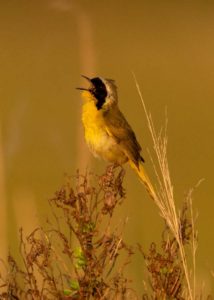


Just two days earlier, I set out in the evening to the same area and had an, albeit photographically less productive, enjoyable and stimulating bike ride as darkness fell:
I returned to Cape Henlopen State park for a bike ride around sunset, entering via Gordon’s Pond Trail near Rehoboth Beach. I consider this area to be one of my favorite locations to visit, with its wonderful marshland, abundance of wildlife, large sand dunes, interesting historic features, coastline, and two lighthouses that stand near the intersection of the bay and sea. It had been only about a year since my last visit, but I still found myself struggling to remember precisely how to navigate the area. There was a full moon this evening, and I had originally planned to capture an image of the moonrise. However, overcast skies caused me to abandon the idea. Yet, the moon revealed itself briefly, its orange surface peeking through clouds near the horizon. I decided at the last moment to head to the east-end lighthouse in an effort to capture the lighthouse with the moon as a backdrop, but I wasn’t able to recall the correct way. Instead, I wound up traveling past the bathhouse, past the youth camp, past the pier, and back around the old military historic area. As darkness fell, some of the old WWII guns were illuminated with a blue light. The old barracks were also illuminated, as if they were expecting to still be used, standing in juxtaposition to the emptiness and quietness of the area. It seemed perhaps reminiscent of a scene in an apocalypse movie, yet I found the sense of eeriness and isolation of the area in a strange way appealing.
However, a still greater sensation of isolation was experienced when I traveled past the campground and down a path that takes one through a long stretch of marshland. It was long after sunset and the trails were becoming quite difficult to navigate. I trusted my memory that the path would lead back to the Gordon’s Pond trail, and from there back to the road, but the lack of clear landmarks in the darkness made me occasionally question whether I was on the path that lead back, or one that would take me even further into the unknown darkness. My phone, which had been having problems with the battery, would likely not work if I needed to use it for finding my way back. Although slightly eager to get to a trail that I could recognize with certainty, I enjoyed the feeling of being surrounded by wild marshland and darkness. The thick grasses of the marshland took on a great sense of mystery. My already dim bike flashlight occasionally flickered off as I biked over little bumps in the path, and at the times when the light extinguished it was difficult to see the path at all, which added to the sense of remoteness. Along the way, lightning bugs created streaks of luminance in the grasses. I was aware of the presence of a myriad of creatures in the marsh that could be heard from the grasses and water along the sides of the trail; it was intriguing to think what they might be and what other creatures inhabited the thick marshes and were waking as night fell. It was reassuring when I reached the end of the path and found that it was indeed the trail I hoped it was. Back on Gordon’s Pond trail, the path was brighter, making for a more confident ride the rest of the way back, concluding another addition to a long list of memorable experiences in this special location.
Chincoteague
Chincoteague
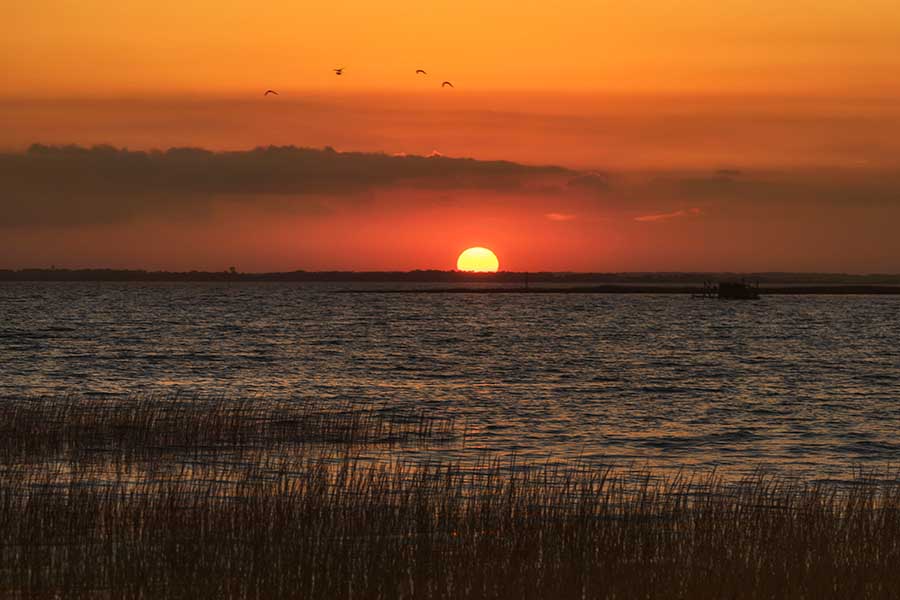
Tom’s Cove,
October, 2018

An Egret Spreading its Wings,
October, 2018








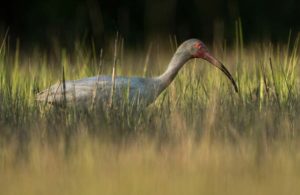



Location Notes
On Chincoteague Island, located at the southern part of Assateague Island, the quaint town of Chincoteague provides beautiful views of Chincoteague Bay while also being in close proximity to a national wildlife refuge where there are beautiful marshes with grasses and abundant bird life. Just like Assateague Island, there are wild horses that can be seen in the area, typically roaming or grazing in the fields. For those looking for active pursuits, there are many hiking and biking trails that pass through woodland or along the marshes in the refuge. One can also enjoy paddling in the bay which provides for exceptional views of the marshland and waterfowl. The refuge also provides access to the beach where one can enjoy the sand and ocean or take a long walk along the undeveloped seaside. One word of caution, the mosquitoes can be a significant problem in the marshy areas of the refuge, so be sure to bring plenty of bug spray if you visit the area.
Assateague
Assateague

A View of Jupiter and the Milky Way from the Island,
May, 2019

Sunset on the Marsh,
May, 2019






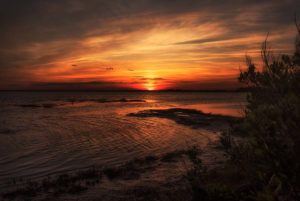



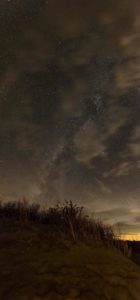


Location Notes
Off of Maryland’s coastline, Assateague Island contains a large section of preserved beachline and is perhaps best known for the wild horses that roam freely on the Island. Spending a weekend at Assateague Island camping near the beautiful Assateague shoreline, allows one to not only enjoy the unique experience of camping near the beach, but also to capture images during any time of day from a very convenient location. Assateague Island consists of a northern portion in the state of Maryland, as well as a smaller southern region in Virginia, which contains the Chincoteague National Wildlife Refuge.

Assateague was set aside for preservation in 1965, three years after a damaging storm halted plans for development on part of the island. Now it is a great place to experience a natural shoreline, free from the houses and hotels that line much of the coast elsewhere. The island is best known for its wild horses which can frequently be seen walking around by the roads, on the beaches, and in the campsites. I have observed horses walking through my campsite on a couple of different occasions. There is a state park and a national park side-by-side on Assateague, which makes choosing which to go to somewhat confusing. I have have only camped at the national seashore, although I believe the state park is very similar. In the national seashore, the vast majority of campsites are on the opposite side of the dunes, providing a short walk to the beach a few hundred feet or so away. There are fewer sites located on the dunes themselves, and some of these provide a view of the waves directly from your tent. The bay-side sites can be plagued by mosquitoes; in fact it is generally not recommended to camp there except during the winter months. Aside from enjoying the camping experience in such a fantastic location, I have also enjoyed taking walks on the preserved and wild shoreline, observing the waterfowl and wild horses, watching a meteor shower under the dark sky, waking up early and walking just outside the tent to photograph sunrise, and taking a canoe out on the bay where one can paddle around the marsh areas or toward the larger heart of the water. There are kayak rentals provided on the island through mid-October, but even in the off-season one can get kayak or canoe rentals at locations off the island and bring the boat in on your car.
On one occasion during a camping trip on the island, I had a particularly memorable night of photography which I will now describe: After enjoying the sounds of the ocean and watching for meteors overhead, I went to bed in my tent on the dunes. It was around midnight when the unexpected sight of bright stars shining through the mesh in the top of the tent enticed me to get a better look. Stepping outside, I could see an abundance of bright stars and the Milky Way arching over the sea to the east. I later realized that Assateague has a particularly dark sky which results from being relatively isolated from light pollution to the west, and the neighboring dark ocean to the east. This leads to a relatively low level of light pollution which allows for better observing of the beauty of the night sky and the Milky Way in a way that is rare in the populated east coast. I enjoyed walking on the sand around the campsite and down the beach, taking images whenever I found a composition I was pleased with. I settled on three separate scenes, which in all totaled about three hours of time walking and capturing the images. Being outside under the stars and on the sand by the ocean, wandering around with the beauty of nature as the primary preoccupation of the mind, was a wonderful experience for which I am grateful. Even though the hour was quite late, the excitement of being outside at night photographing the sky and landscape made any feeling of tiredness of little notice.

Ricketts Glen
RicketTs Glen

Autumn Waterfall,
October, 2023



Location Notes
Situated in central PA, Rickets Glen State Park contains an incredible number of stunning waterfalls which can be seen by walking the 7 mile Falls trail. The sublime nature of these falls combined with their shear number in a small area make this one of the most spectacular places I have ever visited. Although I have not yet succeeded in doing justice to this area with my camera, I captured several images during a visit to the region in autumn that I wish to share. The fall color in this area, as well as most of PA, is truly incredible. A wide range of warm tones of yellows, oranges, and reds turn the woodlands into something that appears to be out of a fairy tale. If you decide to visit the area for yourself in the autumn, the peak color tends to be around October 17-24 but still is impressive starting a week earlier and varies from year to year by a week or so.
Cherry Springs
Cherry Springs

Golden Field in Cherry Springs,
July, 2014



Location Notes
Cherry Springs State Park is located in the northern region of Pennsylvania and is known for having low light pollution, creating dark skies for improved viewing of the night sky. This is a rare quality in the northeast United States, making Cherry Springs a popular location for those in the area who wish to view the milky way, deep sky objects, or do astrophotography. Staying in a tent overnight allows one to observe or image the night sky well into the night. Come prepared with red, night vision friendly, lights for seeing in the dark while not impairing your ability to see the night sky’s faint objects.

When I traveled to Cherry Springs State Park, I arrived several hours prior to sunset which provided an opportunity to explore the area near my campsite. There was a hydrogen-alpha telescope available for viewing the sun, which gives a very nice image of the filaments coming out of its surface. There was also a picturesque field which I walked and took images of the Queen Anne’s lace illuminated by the late golden light. There were beautiful wispy clouds in the sky, defying the foretasted clear conditions. These made for great sunset photos, but obscured the sky early in the night. The sky cleared a couple hours after sunset and allowed for good viewing of deep sky objects and the Milky Way. For those in the region and who want the dark sky conditions without going farther out west, Cherry Springs State Park provides a relatively nearby opportunity to view the night sky in a way closer to how it should appear naturally.
Other Locations
Other Locations








Location Notes
Ohiopyle borough in southern Pennsylvania north of Deep Creek, Maryland. The name “Ohiopyle” derives from a native-American phrase associated with white water, perhaps in reference to the rapids and the many picturesque waterfalls on the Youghiogheny and in the surrounding forests. The river is a popular destination for white-water rafters. There are many companies that provide a guided paddle of part of the river by raft or kayak. Different section of the river can be taken to accommodate those who wish for a calm or more exhilarating experience. The town itself is very small and quaint with only a few stores and restaurants. A train that passes through the town and along part of the river, which also enhances the old-time character of the region. There is a state park that provides excellent camping opportunities as well. I have visited the area in autumn multiple occasions when the area provided a display of color, making it a particularly good time to visit. Another attraction of note in the region is “Fallingwater”, a property designed by the famous architect Frank Lloyd Wright.